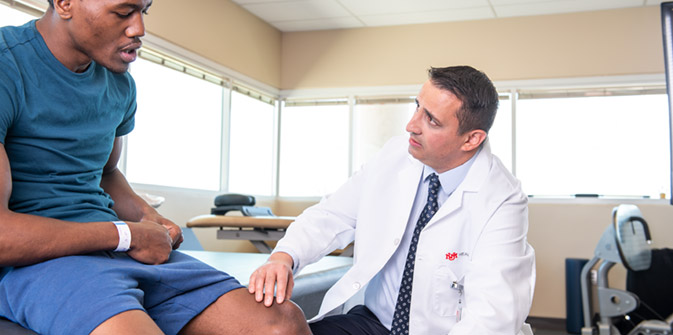Preparing for Disaster: UNM Hospital Participates in Region-Wide Emergency Training

Current Event
UNM Neurosurgeon Pioneers Use of Nerve-Stimulating Device to Treat Rheumatoid Arthritis
Sylvia Telles has spent the past 18 years living with the nagging symptoms of rheumatoid arthritis (RA), in her case, chronic pain in her feet, hip, back, hands and shoulders.
Through the years she has tried various medications to treat the autoimmune disease. Some of them brought relief for a while, then stopped working, so she felt she had nothing to lose when her rheumatologist suggested she try a radical new treatment.
Last month, the 63-year-old Las Cruces homemaker underwent a surgery at The University of New Mexico Hospital to implant to a microstimulator – the size and shape of a multivitamin – alongside the vagus nerve in her neck.
Her doctors hope the experimental procedure, which allows for the delivery of a small daily dose of electricity to the nerve, can reset the immune system and alleviate RA symptoms.
“I feel very positive about this – I do,” says Telles, who underwent the two-hour procedure as part of a national clinical trial.
The microstimulator was implanted by Heather Spader, MD, chief of the UNM Division of Pediatric Neurosurgery, and her colleague James Botros, MD. The use of brain stimulation to treat various neurological problems dates back more than 20 years, she says.
“We use vagal nerve stimulators traditionally for epilepsy,” says Spader, who has used them for pediatric epilepsy patients. “They’ve been used for depression as well. This is a much smaller implant with different dosages.”
Spader, who practiced in Florida before joining UNM in 2020, has conducted five implant procedures – more than any other surgeon in the U.S. – as part of an ongoing trial of the technology.
“They approached our hospital in Florida because there was a rheumatologist in the community who was recruiting patients,” Spader says. “Because of my interest in vagal nerve stimulation, I wanted to be part of the project so that maybe in the future we could use it for pediatric applications.”

The vagus nerve, which connects the brain with the heart, digestive tract and other organs, also plays a role in regulating the release of inflammatory molecules by the immune system.
The fully automated microstimulator delivers a small electrical current to the nerve for just one minute each day. Its rechargeable battery is charged wirelessly via a collar-like device in a single 10-minute session each week.
The devices are so small they nestle deep in the neck between the vagus nerve and the carotid artery, so there is no outward evidence, except for a small scar from the incision, Spader says.
The devices are still in clinical trial, so to test whether the microstimulators are actually having an effect on RA symptoms, patients do not know whether their implants are turned on. In some cases they are activated two to three weeks after surgery, while in others they are only turned on after 12 weeks. Patients will be followed three years to gauge how well the implants work to alleviate RA symptoms.
Telles, who has been seeing Albuquerque rheumatologist Leroy Pacheco, MD, for her treatments, says she had at various times tried immune-modulating drugs like Humira, Enbrel and Orencia.
“The last one I had was the Orencia, but it was not working,” says Telles, whose father and paternal grandmother also suffered from RA. “That is why I was given the opportunity to get into this study.”
Telles is grateful to her physicians for giving her the opportunity to participate in the trial. “I thank them very much and I appreciate them.”